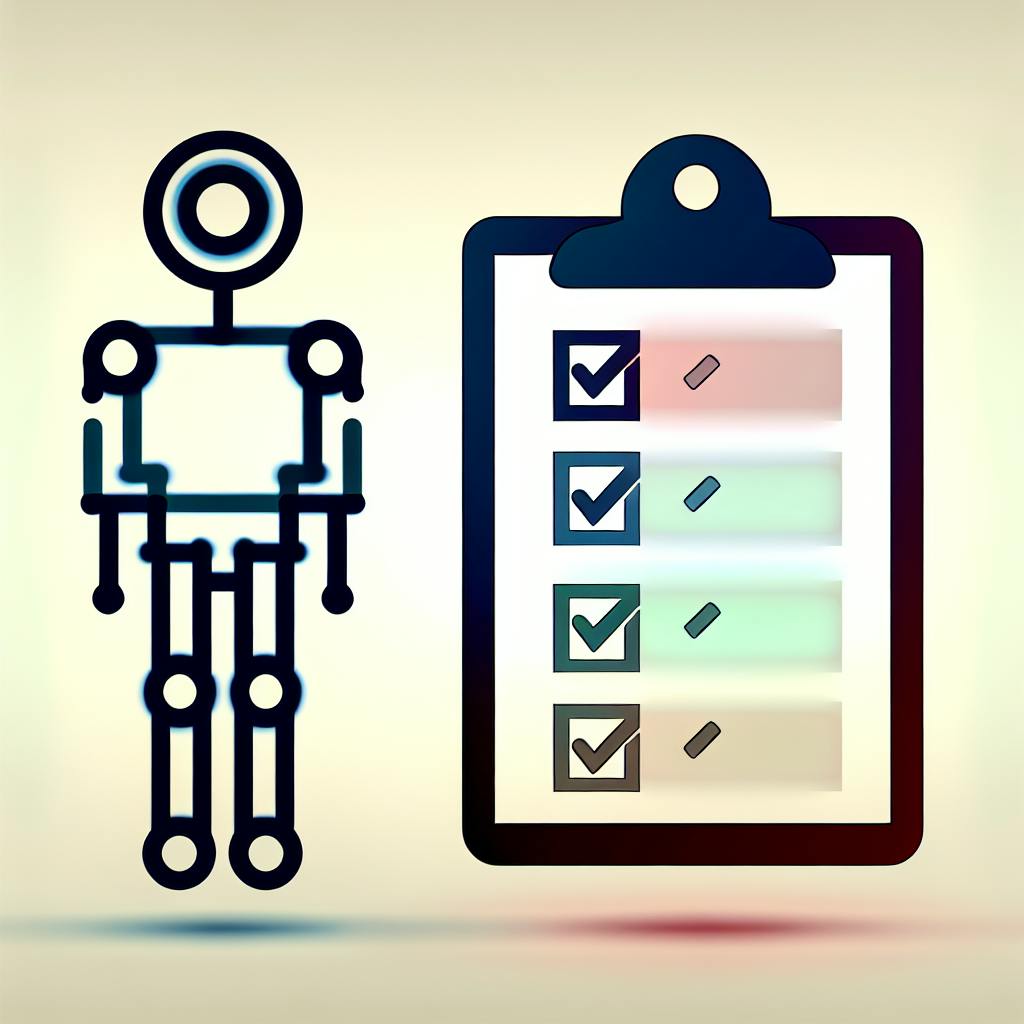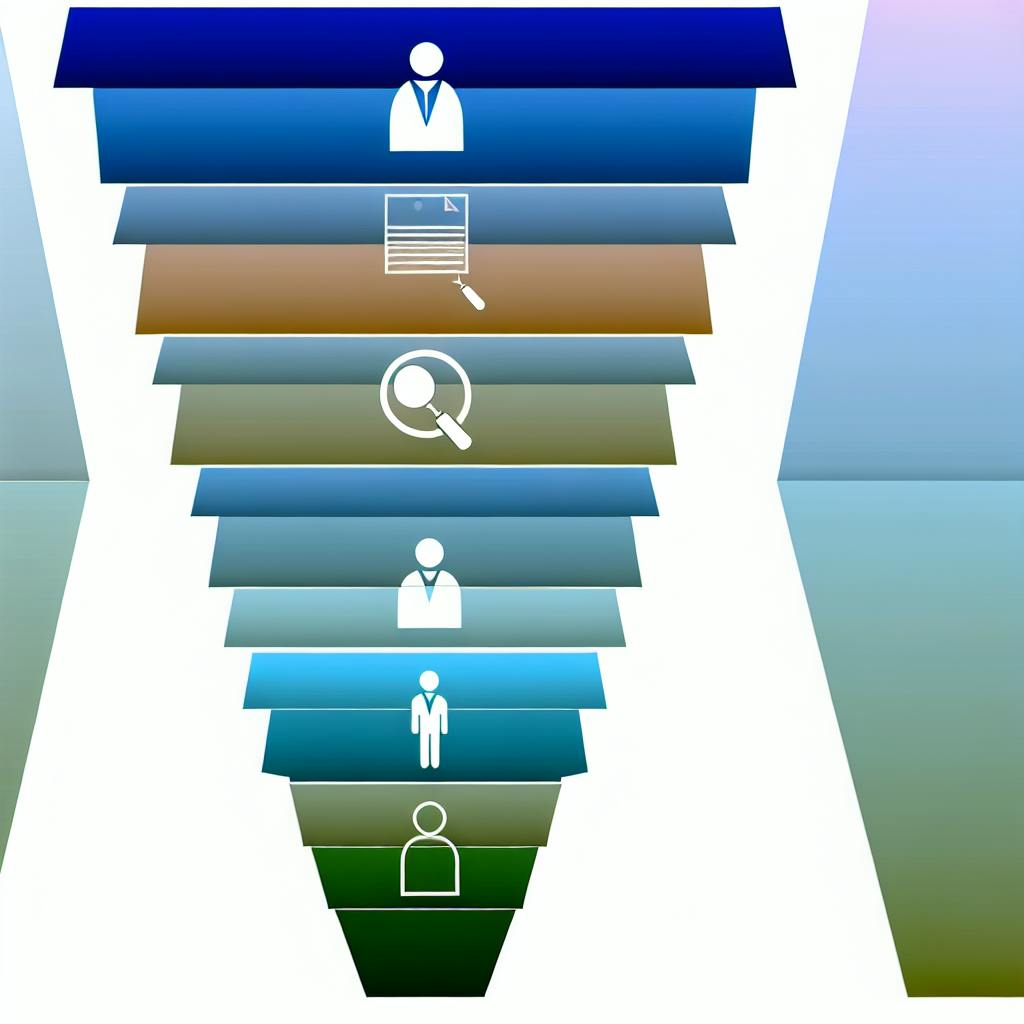To attract top talent, companies must create an engaging and effective career site that showcases their employer brand and values. Here are the 10 essential elements to include:
-
Clear Employment Branding: Highlight your mission, vision, values, company culture, and employee value proposition to attract candidates who align with your organization.
-
Engaging Visuals: Use real photos, videos, infographics, and visual job descriptions to capture attention and provide an immersive experience.
-
Smart Job Listings and Ads: Optimize job listings with relevant keywords, compelling titles, structured data markup, and mobile-friendly design.
-
Friendly Usability: Ensure a user-friendly interface with clear navigation, responsive design, accessible features, and a streamlined application process.
-
Search Engine Optimization (SEO): Implement effective SEO strategies, including keyword optimization, structured data, mobile-friendliness, and XML sitemaps.
-
Social Integration: Leverage social media by embedding feeds, sharing buttons, employee advocacy, targeted campaigns, and social listening.
-
Mobile Optimization: Create a responsive design, mobile-friendly application process, fast loading times, and mobile-specific features.
-
Talent Community: Build and nurture a talent community to establish a pipeline of potential candidates.
-
Personalization: Tailor content, job recommendations, and the candidate journey based on individual preferences and behavior.
-
Analytics and Insights: Leverage data and analytics to gain valuable insights into candidate behavior and optimize recruitment strategies.
Related video from YouTube
1. Clear Employment Branding
A career site should clearly show what makes your company a great place to work. This helps attract candidates who share your values and goals.
Highlight Your Mission, Vision, and Values
Showcase Your Company’s Purpose
-
Display your company’s mission, vision, and core values prominently on the career site.
-
Explain how employees contribute to the company’s purpose.
For example, GetResponse‘s careers page clearly states their mission in just 65 words, giving candidates a clear understanding of the company’s focus.
Showcase Company Culture
Give Candidates a Glimpse
-
Use real photos and videos to show what your workplace culture is like.
-
Highlight team activities, social gatherings, and behind-the-scenes moments.
Avoid generic stock images and feature real employees sharing their experiences through testimonials or short videos. This helps candidates imagine themselves as part of your team.
Emphasize Employee Value Proposition
What’s in it for Employees?
-
Clearly communicate the benefits and perks of working for your company.
-
Explain how these offerings contribute to a positive employee experience and work-life balance.
For instance, you could highlight opportunities for professional development, flexible work arrangements, or unique wellness programs that demonstrate your commitment to employee well-being.
2. Engaging Visuals
Visuals play a crucial role in grabbing the attention of potential candidates and conveying essential information about your company and job openings. In today’s digital age, incorporating visuals into your career site is vital for creating an engaging and memorable experience.
Real Photos and Videos
Use real photos and videos to showcase your workplace, team, and company culture. These visuals help candidates imagine themselves as part of your team, fostering a connection and increasing their interest in your job opportunities.
Employee Testimonials
Feature real employee testimonials in the form of short videos or written quotes. These authentic experiences shared by current employees offer valuable insights into the company culture, work environment, and growth opportunities.
Virtual Office Tours
Create a virtual tour of your office space, showcasing the work environment, collaboration areas, and amenities. This immersive experience allows candidates to explore your workplace from the comfort of their homes, providing a sense of familiarity and transparency.
Infographics and Visual Job Descriptions
Infographics and visual job descriptions can effectively summarize complex job requirements, responsibilities, and organizational structures in a clear and concise format.
Benefits of Infographics
| Benefit | Description |
|---|---|
| Easy to understand | Infographics break down complex information into simple visuals. |
| Attention-grabbing | Visually appealing infographics capture candidates’ attention. |
| Memorable | Well-designed infographics leave a lasting impression. |
Visual Job Descriptions
| Element | Purpose |
|---|---|
| Icons and graphics | Represent job responsibilities, requirements, and qualifications. |
| Timelines and process flows | Illustrate the typical career progression or workflow within the role. |
| Organizational charts | Depict the team structure and reporting relationships for the position. |
3. Smart Job Listings and Ads
Creating effective job listings and ads is crucial for attracting the right candidates to your career site. Here are some key strategies to optimize your job postings:
Keyword Optimization
Conduct thorough keyword research to identify the terms and phrases job seekers use when searching for roles like yours. Incorporate these relevant keywords into your job titles, descriptions, and ads to improve visibility in search results.
Keyword Research Tips:
| Tip | Description |
|---|---|
| 1. Use Keyword Research Tools | Tools like Google Keyword Planner, Moz Keyword Explorer, or SEMrush provide insights into search volume, competition, and trends for job-related keywords. |
| 2. Analyze Competitors’ Job Postings | Examine competitors’ job listings to identify the keywords they’re ranking for and any gaps or opportunities in their strategy. |
| 3. Involve Current Employees | Survey or interview current employees to understand the terms they would use to describe or search for their roles. |
| 4. Test Variations | Use tools like Google Search Console or Google Analytics to measure how different keyword variations perform in terms of impressions, clicks, and rankings. |
Compelling Titles and Descriptions
Craft attention-grabbing job titles that clearly convey the role and its main responsibilities. Use the most important keyword in the title, and incorporate secondary or related keywords throughout the job description.
Job Description Best Practices:
-
Use clear headings like "Responsibilities," "Qualifications," and "Benefits" for easy scanning.
-
Utilize bullet points to list details in a concise and readable format.
-
Keep paragraphs short, with a maximum of three or four sentences.
-
Highlight crucial points using bold or italic text.
Structured Data Markup (Schema)
Implementing structured data markup, also known as schema markup, can enhance how your job listings appear in search results. This code helps search engines better understand and display critical information like job titles, locations, and salaries directly in the search results, making your listings more attractive to potential candidates.
Mobile Optimization
With many job seekers relying on mobile devices, optimizing your job postings for mobile is essential. Ensure your listings are responsive and adapt to various screen sizes, with readable text, viewable images, and smooth navigation.
4. Friendly Usability
A career site should be easy to use and navigate to provide a great experience for job seekers. Here are some key strategies to enhance usability:
Clear Navigation and Structure
Organize your site’s content and job listings in a logical structure. Use clear labels and headings to help users quickly find what they’re looking for. Consider adding features like breadcrumb trails, search filters, and job category sorting to make browsing easier.
Responsive and Mobile-Friendly Design
Many job seekers use mobile devices to access career sites. Ensure your site is responsive and optimized for various screen sizes. Prioritize a clean, uncluttered layout with touch-friendly elements and fast load times.
Accessible Design
Make your career site inclusive and usable for individuals with disabilities. This includes features like proper color contrast, alternative text for images, keyboard navigation, and compatibility with assistive technologies.
Streamlined Application Process
Simplify the job application process by minimizing the number of steps and required fields. Consider allowing candidates to apply with their LinkedIn profiles or resume uploads, reducing manual data entry. Provide clear instructions and progress indicators throughout the application journey.
User-Friendly Content
Present job descriptions, company information, and other content in a scannable format using short paragraphs, bullet points, and clear headings. Avoid jargon and overly complex language, opting for a conversational tone.
5. Search Engine Optimization
Search engine optimization (SEO) is crucial for ensuring your career site is visible to job seekers using search engines like Google. Here are some key strategies to improve your career site’s SEO:
Keyword Research and Optimization
Conduct keyword research to identify relevant terms job seekers use when searching for roles in your industry. Incorporate these keywords naturally into your job descriptions, company information, and other site content. This helps search engines understand the relevance of your pages.
Structured Data and Schema Markup
Implement structured data and schema markup on your job listings to enhance their visibility in Google’s job search results. This provides search engines with additional context about your job postings.
User-Friendly URLs
Use descriptive and keyword-rich URLs for your job postings and other career site pages. For example, https://company.com/careers/software-engineer-jobs-nyc is more SEO-friendly than https://company.com/careers/job-listing?id=123.
Mobile-Friendly Design
Ensure your career site is responsive and provides a seamless experience across devices. Google prioritizes mobile-optimized websites in its search results.
Site Speed Optimization
Optimize your site’s speed by compressing images, minifying code, and leveraging caching techniques. Slow-loading pages can negatively impact your search engine rankings and user experience.
XML Sitemaps and Indexing
Submit an XML sitemap to search engines, providing them with a comprehensive list of your career site’s pages and job listings. This ensures that search engines can effectively crawl and index your content.
| SEO Strategy | Description |
|---|---|
| Keyword Research and Optimization | Identify relevant keywords and incorporate them into site content |
| Structured Data and Schema Markup | Enhance job listing visibility in Google’s job search results |
| User-Friendly URLs | Use descriptive and keyword-rich URLs for job postings and site pages |
| Mobile-Friendly Design | Ensure a seamless experience across devices |
| Site Speed Optimization | Optimize site speed to improve search engine rankings and user experience |
| XML Sitemaps and Indexing | Submit an XML sitemap to search engines for effective crawling and indexing |
sbb-itb-32d91a1
6. Social Integration
Integrate social media into your career site to expand your reach and engage with potential candidates. Here are some key strategies to leverage social media effectively:
Embedded Social Feeds
Add live social media feeds from platforms like LinkedIn, Twitter, and Instagram to your career site. This showcases your company culture, employee stories, and industry insights, giving candidates a glimpse into your workplace environment.
Social Sharing Buttons
Add social sharing buttons to your job listings and career site pages, enabling visitors to easily share content across their social networks. This amplifies your reach and helps attract passive candidates.
Employee Advocacy
Encourage your employees to share job openings, company updates, and employer branding content on their personal social media accounts. This leverages their networks and adds a personal touch, making your company more relatable.
Social Media Campaigns
Launch targeted social media campaigns to promote job openings, employer branding initiatives, and recruitment events. Utilize paid advertising options on platforms like LinkedIn and Facebook to reach relevant audiences.
Social Listening and Engagement
Monitor social media conversations related to your industry, company, and job openings. Engage with potential candidates by answering their questions, addressing concerns, and providing valuable insights.
Here’s a summary of the benefits of social integration:
| Strategy | Benefits |
|---|---|
| Embedded Social Feeds | Showcases company culture and industry insights |
| Social Sharing Buttons | Amplifies reach and attracts passive candidates |
| Employee Advocacy | Leverages employee networks and adds a personal touch |
| Social Media Campaigns | Targets relevant audiences and promotes job openings |
| Social Listening and Engagement | Engages with potential candidates and provides valuable insights |
7. Mobile Optimization
In today’s mobile-first world, a mobile-friendly career site is crucial for attracting and engaging top talent. Most job seekers use smartphones and tablets to search for job opportunities, so a mobile-friendly career site ensures a seamless and engaging candidate experience.
Responsive Design
Use a responsive design that adjusts the layout, content, and visuals to fit any screen size, whether it’s a desktop, tablet, or mobile device. This ensures a consistent and user-friendly experience for candidates.
Mobile-Friendly Application Process
Streamline the job application process for mobile users by creating mobile-optimized application forms. Keep the forms concise, with minimal fields and easy-to-use input options.
Fast Loading Times
Optimize your career site for fast loading times on mobile devices. Compress images, minimize code, and leverage caching techniques to ensure pages load quickly, even on slower mobile connections.
Mobile-Specific Features
Enhance the mobile experience by incorporating mobile-specific features, such as:
| Feature | Description |
|---|---|
| Click-to-Call | Enable candidates to directly call your recruitment team with a single tap. |
| Location-Based Search | Allow candidates to search for job opportunities based on their current location. |
| Push Notifications | Send push notifications to candidates’ mobile devices for new job openings or updates. |
Accessibility
Ensure that your mobile career site adheres to accessibility standards, making it usable for candidates with disabilities. This includes features like proper color contrast, alternative text for images, and support for screen readers.
8. Talent Community
A talent community is a proactive way to build a pool of engaged candidates interested in your company. It’s an ongoing process that starts before job openings arise and continues even after candidates are hired.
Benefits of a Talent Community
| Benefit | Description |
|---|---|
| Strengthen Talent Pipeline | Access a pool of qualified candidates for future job openings |
| Engage with Top Talent | Nurture relationships with promising candidates, even if they’re not actively job hunting |
| Reduce Reactive Recruiting | Tap into a warm pool of candidates, reducing time and effort for reactive recruiting |
| Lower Cost-Per-Hire | Reduce reliance on expensive job board postings and external recruiters |
| Build a Diverse Talent Pool | Attract and engage with a diverse range of candidates from various backgrounds and experiences |
To build an effective talent community, consider implementing a candidate relationship management (CRM) system or leveraging your applicant tracking system’s (ATS) talent community features. This technology can automate communication, segment candidates based on their skills and interests, and provide a centralized platform for engagement.
9. Personalization
Personalization is a key element in creating a compelling career site experience. By tailoring the content and interactions to each candidate’s unique interests, skills, and preferences, you can enhance engagement and increase the likelihood of successful job matches.
Job Recommendations
Use AI and machine learning algorithms to analyze candidate profiles, resumes, and browsing behavior on your career site. Provide job recommendations that align with their qualifications, experience, and career goals.
Dynamic Content
Deliver dynamic content that resonates with each candidate. Based on their interests and preferences, serve up relevant blog posts, employee testimonials, company culture highlights, and other engaging content that showcases your employer brand and value proposition.
Candidate Journey
Map out a personalized candidate journey that adapts to individual behavior and interactions on your career site. For example, a first-time visitor could be guided through a journey that highlights relevant job opportunities, company culture, and growth opportunities.
Predictive Personalization
Utilize advanced AI algorithms to predict candidates’ needs and interests based on their interactions with your career site. Proactively present content, roles, and information that align with their potential interests.
Responsive Design
Ensure your career site is optimized for various devices, providing a consistent and personalized experience across desktop, mobile, and tablet platforms.
| Personalization Benefits | Description |
|---|---|
| Enhanced Engagement | Candidates are more likely to engage with personalized content |
| Increased Conversions | Personalization leads to higher conversion rates |
| Better Job Matches | Candidates are matched with jobs that align with their skills and interests |
| Improved Candidate Experience | Personalization creates a more tailored and engaging experience |
| Competitive Advantage | Personalization sets your career site apart from competitors |
10. Analytics and Insights
Analytics and insights are crucial for understanding the performance and effectiveness of your career site. By tracking key metrics, you can gain valuable data to optimize the candidate experience and improve your recruitment strategies.
Tracking Candidate Behavior
| Metric | Description |
|---|---|
| Session Duration | How long candidates spend on your site, indicating content engagement. |
| Bounce Rate | The percentage of visitors who leave after viewing a single page, revealing potential areas for improvement. |
| Page Views | The most popular and engaging pages to prioritize content development. |
| Conversion Rate | The percentage of visitors who complete desired actions, such as applying for jobs or joining your talent community. |
Analyzing Traffic Sources
| Source | Description |
|---|---|
| Direct Traffic | Visitors who access your site directly, measuring brand awareness. |
| Referral Traffic | Traffic from external links and partnerships driving visitors to your site. |
| Search Traffic | The performance of your SEO efforts and keyword relevance. |
| Social Media Traffic | The impact of your social media presence on attracting potential candidates. |
Optimizing Recruitment Strategies
| Insight | Description |
|---|---|
| Candidate Journey Analysis | Identify bottlenecks or drop-off points in the application process to streamline the candidate experience. |
| Content Effectiveness | Evaluate the engagement and readability of your job descriptions, company culture pages, and other content. |
| Marketing Channel Performance | Determine the most effective recruitment marketing channels for your target audience. |
| Demographic Insights | Analyze candidate demographics to tailor your messaging and outreach strategies. |
By leveraging these analytics and insights, you can make data-driven decisions to enhance your career site, improve candidate engagement, and ultimately attract and hire top talent more effectively.
Conclusion
Creating a compelling career site is crucial for attracting top talent and streamlining the recruitment process. By incorporating the 10 key elements outlined in this guide, companies can create an engaging and effective platform that showcases their employer brand and values.
Key Takeaways
Here are the 10 essential elements to include in your career site:
1. Clear Employment Branding: Showcase your company’s values, culture, and what it’s like to work there.
2. Engaging Visuals: Use high-quality images, videos, and infographics to capture candidates’ attention.
3. Smart Job Listings and Ads: Optimize job listings and targeted job ads to attract qualified applicants.
4. Friendly Usability: Ensure a user-friendly interface with easy navigation and a streamlined application process.
5. Search Engine Optimization (SEO): Implement effective SEO strategies to increase your career site’s visibility.
6. Social Integration: Integrate social media platforms to showcase your company culture and engage with candidates.
7. Mobile Optimization: Ensure a mobile-optimized career site to provide a seamless experience for mobile users.
8. Talent Community: Build and nurture a talent community to establish a pipeline of potential candidates.
9. Personalization: Tailor content and recommendations based on individual preferences and behavior.
10. Analytics and Insights: Leverage data and analytics to gain valuable insights into candidate behavior and optimize your recruitment strategies.
Final Thoughts
In today’s competitive job market, a well-designed career site is essential for attracting and hiring top talent. By following these 10 key elements, companies can create a platform that showcases their employer brand, values, and culture, ultimately giving them a competitive edge in the recruitment process.




